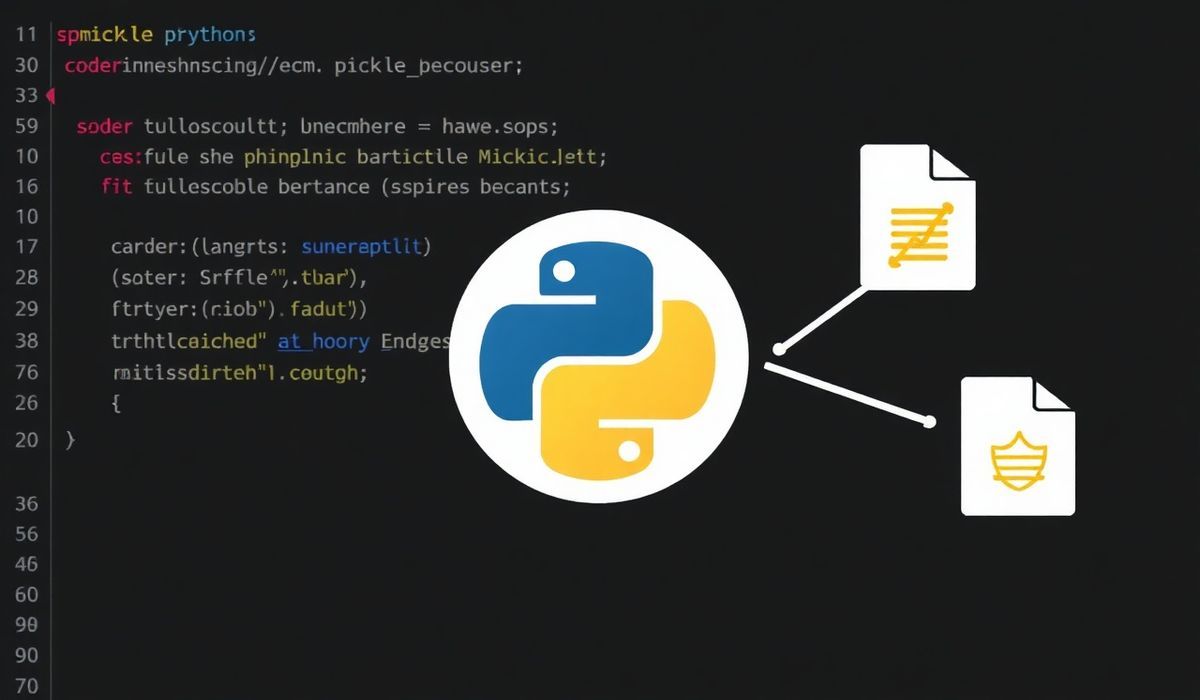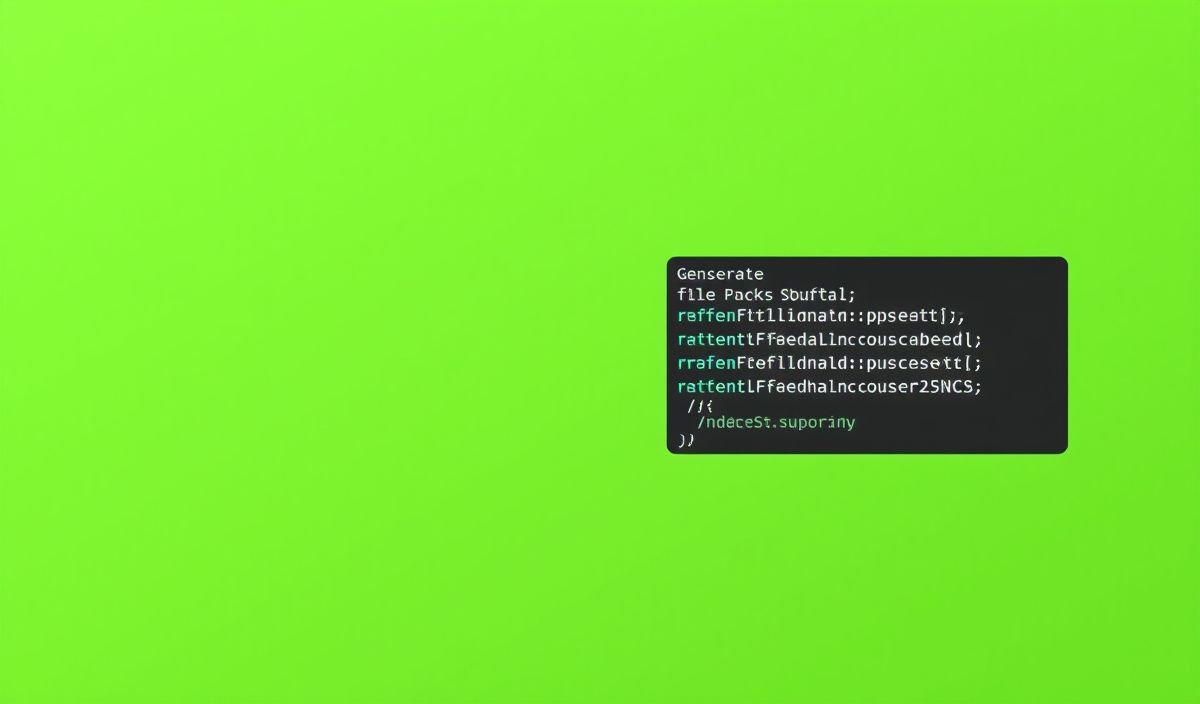Introduction to Pickle in Python
Pickle is a module in Python used for serializing and deserializing Python objects. Serialization, also known as “pickling,” means converting a Python object into a byte stream for storage in a file or database, or for transmission over a network. Deserialization, or “unpickling,” is the reverse process: it reconstructs a Python object from a byte stream.
Pickling is useful when you need to save the state of an object or share Python objects with other programs, even across different machines. It supports most built-in data types like integers, floats, strings, lists, dictionaries, and even user-defined objects. However, there are some limitations: for example, not all types of Python objects can be pickled, such as file handles, sockets, and threads.
The pickle module is a must-know tool for Python developers who want to store Python objects efficiently, send data between processes, or simply save program states for later use.
Comprehensive Reference to Pickle APIs (with Code Snippets)
1. pickle.dumps(obj)
Serializes a Python object into a byte stream (in memory).
import pickle
data = {"name": "Alice", "age": 30}
byte_stream = pickle.dumps(data)
print(byte_stream)
2. pickle.loads(byte_stream)
Deserializes a byte stream back into a Python object.
deserialized_data = pickle.loads(byte_stream)
print(deserialized_data) # Output: {'name': 'Alice', 'age': 30}
3. pickle.dump(obj, file)
Serializes and writes a Python object to a file.
with open('data.pkl', 'wb') as file:
pickle.dump(data, file)
4. pickle.load(file)
Reads and deserializes a Python object from a file.
with open('data.pkl', 'rb') as file:
deserialized_data = pickle.load(file)
print(deserialized_data) # Output: {'name': 'Alice', 'age': 30}
5. pickle.HIGHEST_PROTOCOL
Returns the highest available protocol version for serialization, which creates efficient and compact byte streams.
print("Highest Protocol:", pickle.HIGHEST_PROTOCOL)
# Output: Highest Protocol: 5 (as of Python 3.8+)
6. pickle.DEFAULT_PROTOCOL
Returns the default protocol used when pickling objects (default is 4 in Python 3.4+).
print("Default Protocol:", pickle.DEFAULT_PROTOCOL)
7. Pickling Nested Objects
You can serialize nested objects like lists within dictionaries.
complex_data = {"numbers": [1, 2, 3], "details": {"name": "Bob"}}
binary_data = pickle.dumps(complex_data)
print(pickle.loads(binary_data)) # Output: {'numbers': [1, 2, 3], 'details': {'name': 'Bob'}}
8. Pickling Custom Python Classes
You can serialize objects of user-defined classes, provided they’re defined in the same module.
class Person:
def __init__(self, name, age):
self.name = name
self.age = age
def __repr__(self):
return f"Person(name={self.name}, age={self.age})"
person = Person("Alice", 30)
with open('person.pkl', 'wb') as file:
pickle.dump(person, file)
with open('person.pkl', 'rb') as file:
deserialized_person = pickle.load(file)
print(deserialized_person) # Output: Person(name=Alice, age=30)
9. Using protocol Argument
Specify a protocol explicitly when pickling objects.
protocol_version = 1 byte_stream = pickle.dumps(data, protocol=protocol_version) print(byte_stream)
10. Working with Large Data using Pickle
When the data being serialized is large, you can use pickle to write it in chunks.
large_list = list(range(1000000))
with open('large_data.pkl', 'wb') as file:
pickle.dump(large_list, file, protocol=pickle.HIGHEST_PROTOCOL)
with open('large_data.pkl', 'rb') as file:
loaded_data = pickle.load(file)
print(len(loaded_data)) # Output: 1000000
11. Pickling with io.BytesIO
pickle can serialize data into an in-memory buffer using io.BytesIO.
import io
buffer = io.BytesIO()
pickle.dump(data, buffer)
buffer.seek(0) # Rewind the buffer to the beginning
print(pickle.load(buffer)) # Output: {'name': 'Alice', 'age': 30}
12. Handling Pickling Errors (pickle.PicklingError)
Manage errors if pickling fails, such as attempting to pickle an unsupported type.
try:
import threading
pickle.dumps(threading.Lock()) # Unsupported object
except pickle.PicklingError as e:
print("Error during pickling:", str(e))
13. Custom Serialization for Classes
Override __reduce__ or __getstate__ and __setstate__ methods for custom pickling behavior.
class CustomClass:
def __init__(self, value):
self.value = value
def __getstate__(self):
# Custom serialization logic
return {'data': f"Serialized-{self.value}"}
def __setstate__(self, state):
# Custom deserialization logic
self.value = state['data'].replace("Serialized-", "")
obj = CustomClass("Example")
binary_data = pickle.dumps(obj)
loaded_obj = pickle.loads(binary_data)
print(loaded_obj.value) # Output: Example
14. Compressing Pickle Data
Combine pickle with compression libraries like gzip or zlib.
import gzip
with gzip.open('data.pkl.gz', 'wb') as f:
pickle.dump(data, f)
with gzip.open('data.pkl.gz', 'rb') as f:
loaded_data = pickle.load(f)
print(loaded_data) # Output: {'name': 'Alice', 'age': 30}
15. Working with Multiple Objects in One File
Write multiple Python objects to the same file.
data1 = {"one": 1}
data2 = {"two": 2}
with open('multi.pkl', 'wb') as f:
pickle.dump(data1, f)
pickle.dump(data2, f)
with open('multi.pkl', 'rb') as f:
print(pickle.load(f)) # Output: {'one': 1}
print(pickle.load(f)) # Output: {'two': 2}
16. Checking Size of Pickled Object
Estimate the size of the serialized data using sys.getsizeof.
import sys
pickled_data = pickle.dumps(data)
print("Pickled data size:", sys.getsizeof(pickled_data))
17. Restricting Pickle Usage for Security
Limit the scope of pickle usage for safer data handling (important to prevent deserialization attacks).
18. Unpickling via External Data Sources
Use the pickle library in combination with APIs like requests to unpickle external data.
19. pickletools to Debug Pickles
Inspect and debug pickle byte streams.
import pickletools binary_data = pickle.dumps(data) pickletools.dis(binary_data)
20. Compatibility Across Python Versions
Use lower protocols for compatibility with older Python versions.
byte_stream = pickle.dumps(data, protocol=0) # Oldest protocol print(pickle.loads(byte_stream))
A Generic Application That Uses Pickle
Here’s an application that saves user progress in a game and reloads it upon restarting.
import pickle
import os
class Game:
def __init__(self):
self.player_name = "Player1"
self.level = 1
self.score = 0
def progress(self):
print(f"{self.player_name} is on level {self.level} with a score of {self.score}")
def save_state(self, filename='game_state.pkl'):
with open(filename, 'wb') as file:
pickle.dump(self, file)
print("Game state saved!")
@staticmethod
def load_state(filename='game_state.pkl'):
if os.path.exists(filename):
with open(filename, 'rb') as file:
return pickle.load(file)
else:
print("No game state found. Starting new game...")
return Game()
# Usage
game = Game.load_state() # Load previous state if available
game.progress()
game.level += 1
game.score += 50
game.progress()
game.save_state()
By combining the flexibility of pickle with robust application logic, you can build versatile programs to manage and persist complex objects.




